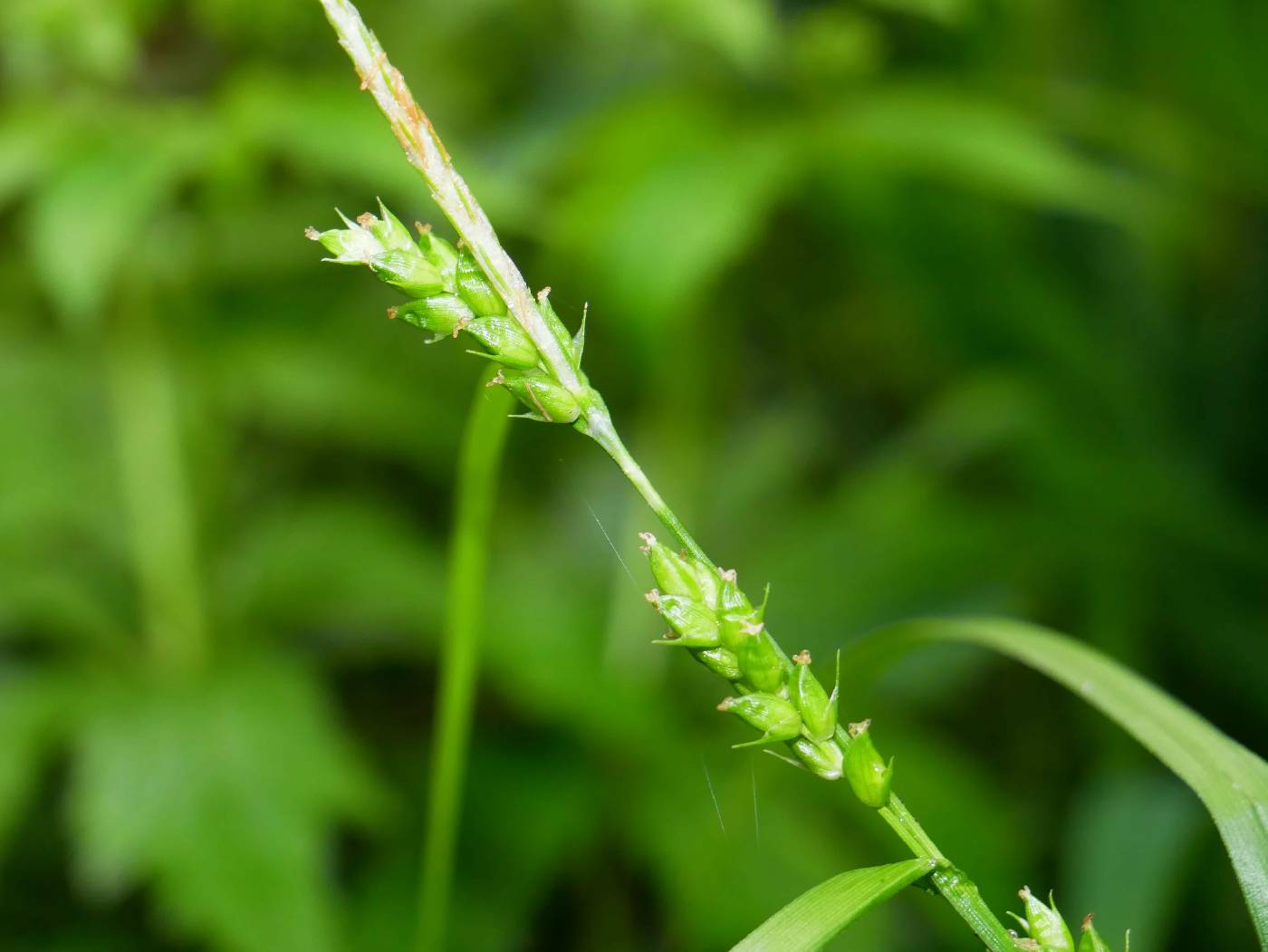

Carex amphibole, known as gray sedge, is a species of flowering plant in the family Cyperaceae. It was first formally named in 1855. Carex amphibole is native to the eastern United States and Canada.
Carex amphibole is commonly confused with Carex grisea, which has somewhat greener perigynia with more rounded tips, versus the gray-green coloring and angular tips of C. amphibole perigynia. The perigynia of C. amphibole are somewhat more clustered and spreading at maturity, while those of C. grisea are strongly ascending.
Carex amphibole grows in mesic deciduous forests, often in loamy areas near streams.
| Requirement | |
|---|---|
| Hardiness | 3,4,5,6,7,8,9 |
| Heat Zones | 3,4,5,6 |
| Climate Zones | 3, 4, 5, 6, 7, 8 |
| Plant Type | Perennials |
| Plant Family | Cyperaceae |
| Exposure | Partial Sun, Shade |
| Season of Interest | Late Spring |
| Height | 1' - 2' |
| Spread | 1' - 2' |
| Water Needs | Average, High |
| Maintenance | Low, Average |
| Soil Type | Loam, Acid |
| Characteristics | Semi-Evergreen, Deer Tolerant, Wet Soil Tolerant |
| Garden Styles | City and Courtyard, Coastal Garden |
| Planting Place | Banks and Slopes, Beds and Borders, Bog Gardens, Edging, Rain Gardens, Small Gardens, Underplanting Roses and Shrubs, Water Gardens |